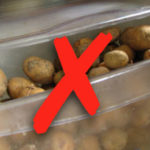Baking powder is a familiar ingredient for bakers and pastry chefs. It is added to cake and pastry recipes to create a fluffy and delicious treat. However, many people are still unsure about what baking powder is and how it works.
1 What is Baking Powder? What are its Components?
 Baking powder, also known as Baking Powder in English
Baking powder, also known as Baking Powder in English
powder, also known as baking powder, is a dry mixture of the following ingredients: bicarbonate soda, a small amount of starch to keep the other components dry, and certain acids necessary to produce carbon dioxide gas for leavened baked goods.
 Baking powder is commonly used in baking cakes, pastries, and muffins
Baking powder is commonly used in baking cakes, pastries, and muffins
This type of baking powder is commonly used in baking cakes, pastries, and muffins because it can help the dough rise through a chemical reaction that produces carbon dioxide.
2 How to Properly Use and Store Baking Powder
 The effectiveness of baking powder decreases over time
The effectiveness of baking powder decreases over time
The effectiveness of baking powder decreases over time, so it should be stored in an airtight container in a cool, dry place.
To test the quality of your baking powder, mix half a teaspoon of it with about 50ml of hot water. If it bubbles and sizzles, the powder is still good to use.
 Baking powder that bubbles and sizzles when mixed with hot water is still good to use.
Baking powder that bubbles and sizzles when mixed with hot water is still good to use.
When baking, it is important not to use too much baking powder. Excessive baking powder will result in a crumbly and unpleasant-smelling cake. On the other hand, using too little will prevent the cake from rising and give it a dense texture.
If you add an extra egg to your cake batter, reduce the amount of baking powder by half a teaspoon, and vice versa.
We hope that this article has provided you with a better understanding of baking powder, its components, and its uses. Happy baking!
What are the Dangers of Storing Potatoes in the Refrigerator?
Whether it is a side of French fries or a potato salad, potatoes should not be stored in the refrigerator. Điện máy XANH is here to explain why so that you can enjoy your potatoes safely.







































